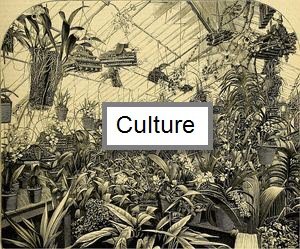Foliar Fertilizing
During the peak growing months of summer use a foliar fertilizer of very dilute fertilizer with 1/2 teaspoon per gallon soap as a wetting agent so that the fertilizer will stay on the leaves long enough to allow the plant to absorb the nutrients. Be sure to spray early in the morning before the sun gets to the plants and provide excellent air circulation to allow for rapid evaporation to prevent rots. Be very careful with the crowns of Phals and Paphs.
Seal cuts when you trim plants
You can use melted candle wax to seal the cut when you trim back your orchids after blooming or when cutting off old pseudobulbs or leaves. This will completely seal the cut and prevent the introduction of bacterial or fungal diseases. Other ways to seal cuts are cinnamon (without sugar), Elmer’s Glue, and various commercial products.
Be consistent with staking Staking
new growths is one of the most underutilized growing principals in orchid growing. This is a important element in getting your plants to look good and to present your flowers correctly when they open. Stake when the growths are about half done or for larger plants when the growth is about 5 inches, or 12 centimeters, tall. Continue to train the growth to the stake and then include the inflorescence when it appears.
Attaching to stakes
There are many different ways to tie your plant to a stake. For whimsy, use the little insect shaped clips that come in butterfly, dragonfly or other shapes. They should be large enough to hold the growth to thestake without impeding the growth. If you use a clip that’s too small it will damage the new growth. Twist ties will work as well as raffia which can be used to tie together the entire plant for a nice shape.
Mist in the mornings
Misting is great for your plants, but you must be careful to mist early in the day so that your plants have time to completely dry before nightfall. Fans to circulate air will also help deter the growth of fungus as they do not like moving air and it makes it more difficult for the spores to attach.
Rotate your plants to display blooms
Orchids in bloom need less light than those that are developing new growths or are resting. In fact, too much light will fade some flowers. So, when you have a well-developed inflorescence, move your plant further from the light source and toward the front of your area so you can display it and enjoy the flowers more easily. I often put the pot on top of another pot to lift the plant up so that the flowers are closer to eye level.
